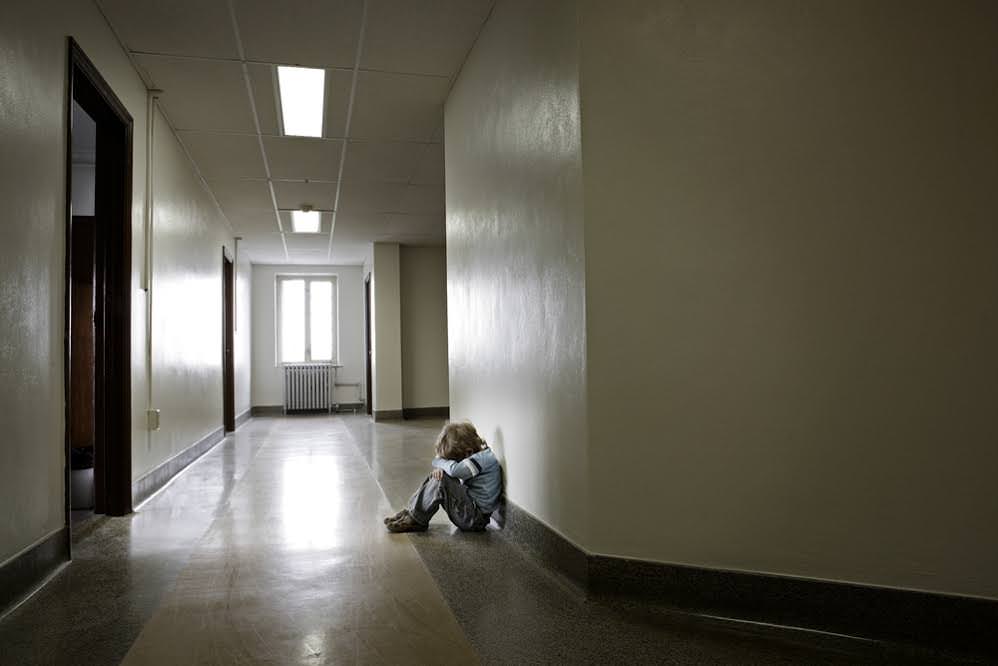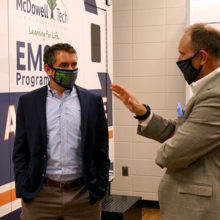On any given day in schools across North Carolina, children are walking through the schoolhouse doors carrying far more than their backpacks and school supplies. They carry with them the weight of their life experiences, and this weight can be a heavy one.
We know that students come to school each day while their parents are undergoing a traumatic divorce, or while they face their own loss of a sibling. They come to school leaving behind a parent who struggles with mental illness or drug addiction. They come from homes or communities where violence and danger are everyday facts of life.
We live in a state where over 500,000 children live in poverty. Across North Carolina, we have students for whom school breakfast and lunch are their most consistent source of nutrition.
“Adverse childhood experiences” (ACEs) like these can trigger trauma responses that impact a child’s ability to learn and to function in the classroom setting. With data showing the high prevalence of ACEs in the lives of North Carolina’s children, and with research drawing a direct line between these experiences and the learning process, we might well pose the question:
Is it possible for every child to succeed in North Carolina’s schools?
The Public School Forum’s Study Group XVI explored the issue of trauma and learning — and ultimately the question of how we might create environments where every student has a chance at success. Our committee — one of three written about in this week’s series on EdNC — studied the prevalence and impact of traumatic experiences on student learning, and learned from state and national experts about strategies for addressing these impacts within educational settings.
Throughout the committee process, we heard many different labels and phrases utilized around the topic of trauma and learning:
- Safe and Supportive Schools
- Adverse Childhood Experiences (ACEs)
- Resiliency in Learning
Regardless of the label, it was the impact of a child’s environment and experience that drove the conversation — whether that meant their home life, the neighborhood they call home, the neighborhood of their school, or the nature of the school itself.
ACEs include factors as diverse as violence in their neighborhood, child abuse and neglect, divorce, the loss of a sibling or parent, alcoholism or drug abuse within a home, domestic violence, and other issues that cut across socioeconomic lines. ACEs can be found anywhere, although research does indicate that they are more commonly found among children who live in poverty. In fact, the day-to-day struggles that come with poverty and food insecurity can themselves be traumatic.
Childhood trauma is an all-too common factor in the lives of students. The CDC-Kaiser Permanente Adverse Childhood Experiences (ACE) Study, conducted from 1995-1997, documented the prevalence of traumatic experiences in childhood. Among respondents, 28 percent were physically abused as children; 21 percent were sexually abused; 27 percent lived in households where substance abuse occurred; and 13 percent lived in homes where the mother was treated violently. One in five children experienced traumatic events in three or more categories of ACEs.
Though students can display remarkable resilience in the face of adversity, too often students arrive at school too overwhelmed to learn. Educators see ACEs manifest in negative and disruptive behavior, but often this is a result of students functioning in a constant state of hypervigilance to danger or perceived threat.
David Thompson, the director of Student Services for Buncombe County Schools, highlighted the lessons that his district has gained as they have begun to implement a district-wide approach to dealing with ACEs. The district’s approach is called “Compassionate Schools”.
Thompson spoke of the need to shift student and teacher mindsets from trauma to resiliency. He shared some of these lessons via EdNC.org, where he wrote:
Much has been learned from research into the changes in brain chemistry as a result of chronic stress or trauma. What we know is that when children with stress or trauma backgrounds encounter stressful or “threatening” situations, the brain responds with a flight, fright, or freeze response. Within the brain, the amygdala serves as the alarm bell when we encounter situations. Within the mid-brain limbic system, hormones like cortisol and adrenaline bring us to a heightened state and our survival instincts kick in. From this we can conclude that many of the behaviors teachers and administrators consider most disruptive and maladaptive in the school environment are simply coping and survival strategies that are very much brain-based behaviors.
The opportunity in a Compassionate School model is to change the school paradigm to acknowledge that the real question about behavior is, “What happened to the student?” as opposed to “What is wrong with the student?”
Schools and school systems typically focus on behavior itself, instead of scrutinizing and responding to aspects of students’ experiences that shape their behavior.
The result is to punish or disengage from students at their most vulnerable moments, when they are most in need of understanding, support, and help in building new coping skills.
Study Group XVI committee members also heard from the Trauma & Learning Policy Initiative via Michael Gregory and Joel M. Ristuccia. Gregory and Ristuccia discussed major strands of TLPI’s ground-breaking progress in individual student advocacy; school-based, trauma-sensitive pilot programs; and policy advocacy. They spotlighted five cornerstones of their work:
- Many students have had traumatic experiences.
- Trauma, which is a response to adversity, can impact learning, behavior, and relationships at school.
- Trauma-sensitive schools help children feel safe so they can learn.
- Trauma sensitivity requires a whole-school effort.
- Helping traumatized children learn should be a major focus of education reform.
Whole-school efforts to build trauma sensitivity can improve school climate and reduce disciplinary referrals and suspensions. Interventions to build student resilience can improve not only behavior, but also academic persistence, achievement, and emotional well-being.
The challenge before the committee was to compile the science, data, and lessons into a set of recommendations that would work for North Carolina. Most importantly, these recommendations are not meant to form an unfunded mandate that adds more to the plates of already burdened educators. Rather, these recommendations are intended to set the conditions that allow schools to undertake the process of becoming trauma-sensitive — with the ultimate goal of improving school climate and success for students and educators alike.
Committee recommendations center around three central components to lay the groundwork for this work in North Carolina:
- Training for educators and administrators about the prevalence and impact of trauma, as well as effective strategies and interventions for creating a safe space where students can learn
- Pilot programs where high-need schools receive training, coaching, and support to implement a school-led process of transformation modeled after nationally-recognized trauma-sensitive initiatives
- State-level policy to guide, support, and incentivize schools’ work around trauma and learning, as well as to remove barriers to this work
We recommend a focus on the opportunities available under the Every Student Succeeds Act to support these efforts. Indeed, addressing the impacts of trauma on learning is an area of urgency if we are to build schools where each student has the opportunity for success, which will, in turn, support the futures of our students and the economic well-being of our state.


